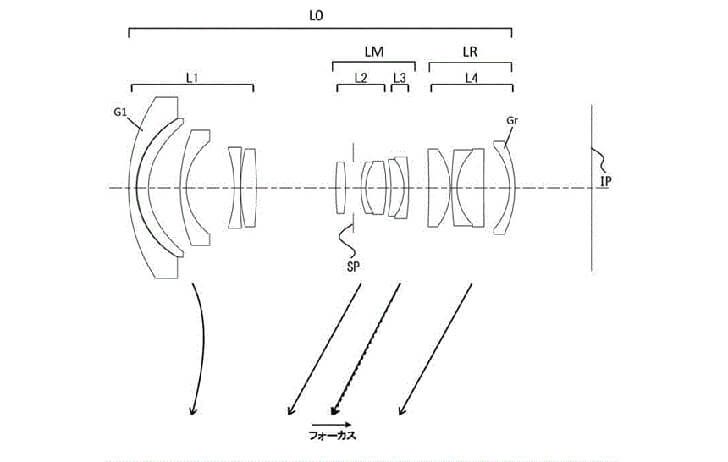A new optical formula patent for a wide angle RF mount zoom has appeared. This one shows the formula for a couple of Canon RF 17-35mm f/4-5.6 designs.
The lenses in the two embodiments aren't all that much smaller than an EF counterpart, and it looks like zooming is slightly external.
Canon RF 17-35mm f/4-5.6
- Focal length: 17.50mm 27.00mm 33.95mm
- F-number: 4.00 5.03 5.80
- Half field angle: 51.03° 38.71° 32.51°
- Image height: 21.64mm 21.64mm 21.64mm
- Lens total length: 121.00mm 118.39mm 121.18mm
- BF: 20.00mm 30.99mm 38.92mm
Canon RF 17-35mm f/4-5.6
- Focal length: 17.50mm 27.00mm 33.95mm
- F-number: 3.94 4.92 5.69
- Half angle of view: 51.03° 38.71° 32.51°
- Image height: 21.64mm 21.64mm 21.64mm
- Total lens length: 122.00mm 119.11mm 121.87mm
- BF: 20.00mm 31.62mm 40.07mm
Once all of the fast zooms ship this year, I think it's safe to assume we're going to see f/4 variants soon after.
Some of our articles may include affiliate links. If you purchase through these links, we may earn an affiliate commission at no extra cost to you.


I think what Canon will do with APS-C on RF (if they even bother) is to produce lenses that are nominally full-frame lenses (so will work on all R bodies) but optimized for APS-C usage (ie not the best in the corners at FF - but with in-camera corrections this won't necessarily be such a problem.)
I really doubt they'd do this.
Canon could take then 18-55 EF-M design and port it over to the RF mount in literally a new york minute, if they ever decided to make a consumer APS-C lens for the RF mount.
The way the market is dying off at the low end I really doubt you'll see Canon go into the APS-C market at all with the RF mount.
If I was Canon going into R APS-C I'd make a real APS-C kit lens. That'll be smaller than this patent as you wouldn't need that image circle.
I've just posted a thread about Canon Germany's summer cashback. When you take a look at the last 3 or 4 cashback promotions here in Ger they focus on FF and high perf lenses.
This looks to me as they quit thinking about the APS-C (DSLR) consumer market or those products are so much striped down in profit margin that there is no more place for promotions. And I don't think the later but the former.
It's possible that, if APS-C is declining, Canon will fill out the variable-speed/STM line with an UWA, so the lines would be:
That STM variable UWA is one they haven't made yet to my knowledge, but they could make it to match the RP and have a full line of budget FF RF lenses for the folks stepping up from crop. That's just my speculation though.
Tony Northrup told me I can skip the filter and fix it in Photoshop later.
I would expect the combination of shorter flange distance and f-stop slower on the wide side to allow for a smaller lens.
Lots of people claim the RF mount allows substantially smaller lenses. So far, there’s no evidence to support that claim.
Which makes me wonder...
1. Are the lenses larger because Canon had to put more glass (than shorter flange distance would save) in to improve IQ?
2. If the shorter flange doesn't help to make smaller (or better) lenses, why did Canon change it in the first place?
It does help to make better lenses. Just look at the RF 28-70 F2.0 or a new RF 85 F1.2. These are unique and/or amazing lenses.
For (2), the lack of a mirror allows the body to be shallower (although it’s not a requirement, obviously). A shallower body requires either a new mount design to accommodate the shorter distance between sensor and mount, or a “snout mount“ like Sigma used.